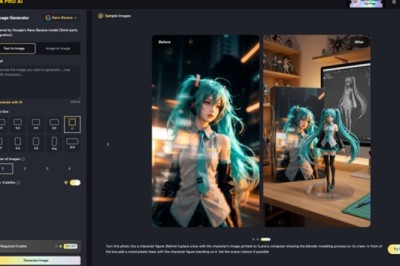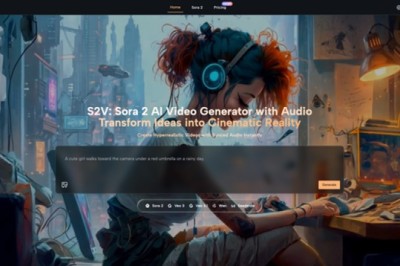views
Customer service is the support that you give to your customers when they are buying, as they are buying, or after buying from you. Customer service means you interact with your customers through various channels, such as phone, email, chat, or in-person, to address their needs, answer their questions, and resolve any issues or complaints they may have.
You need to focus on customer service for several reasons.
Number one: It helps to build and maintain positive relationships with customers, which can lead to increased loyalty. This can mean repeat business and positive word-of-mouth referrals.
Number two, good customer service sets you apart from your competition, positioning you as a provider of quality products or services.
Number three, effective customer service will help you to identify opportunities for improvement and innovation, by providing insights into customer needs, preferences, and pain points.
Finally, poor customer service can have a negative impact on a business's reputation. This can affect the bottom line, leading to negative reviews, customer churn, and, in the end, lost sales.
Here are 4 major steps to help you improve your customer service.
Step 1 – Define Your Goals & Objectives
Defining your goals and objectives is the first and most important step in developing a customer service strategy. Here are some key steps to consider when defining your goals and objectives:
1. Identify your business objectives: Start by identifying your business objectives and how customer service can support those goals. For instance, if your objective is to increase revenue through sales, your customer service strategy must focus on improving customer experience to drive more sales.
2. Determine your customer service objectives: Once you have identified your business objectives, it is now time to determine your specific customer service objectives. These could be improving a variety of factors such as improving First Response Time (FRT), improving CSAT ratings, improving customer retention rates etc.
3. Set measurable goals: Remember, your goals must be specific, measurable, achievable, relevant, and time-bound (SMART). For example, a measurable goal could be to increase customer satisfaction ratings by 10% within the next six months.
4. Consider your target audience: You should know the needs and preferences of your target audience when setting customer service objectives. Case in point, if your target audience is young, consider offering support through social media channels.
5. Review past performance: It is important to review past customer service performance so that you can identify areas for improvement.
6. Align your goals with your overall strategy: Make sure your customer service objectives are in line with your overall business strategy. They must be consistent with your brand values and messaging.
Step 2 – Analyze Your Target Audience & Understand Their Needs
Analyze your target audience, and understand their needs and you are on the way to developing an awesome customer service strategy. Here are some key steps to consider:
1. Define your target audience: Who are your ideal customers? What are their demographic characteristics, such as age, gender, income, and location? Where are they from, what are their age, gender, and location? How much do they make? Get to know the minutest of details.
2. Develop buyer personas: Create buyer personas that are a representation of your ideal customers. You should base these personas on insights from your existing customers, as well as data from your website and social media channels.
3. Identify customer pain points: Identify the pain points that your target audience faces when interacting with your brand or your industry as a whole. Why are they coming to you as a brand? What are their major challenges?
4. Analyze customer data: Study customer data, such as website analytics, social media metrics, and customer support interactions, to help you know what your customers like, and adjust customer service strategy accordingly.
5. Conduct customer surveys: Customer surveys help you collect feedback for your brand. This can help you identify areas of improvement.
6. Monitor industry trends: Stay up to date with the latest industry trends on customer service, which will help you stay relevant.
Step 3 – Establish Clear Communication Channels
Establishing clear communication channels is a critical component of any successful customer service strategy. How do you do this? Here are some key steps
1. Identify your customers' preferred channels: Where do your customers hang out, and where do they prefer to be contacted? This could include email, phone, chat, social media, or in-person support. For instance, do they hang out on WhatsApp? If yes, offer support over WhatsApp, using techniques such as the WhatsApp Cloud API.
2. Offer multi-channel support: Once you have identified the preferred channel, meet your customer there and offer multi-channel support. This can help improve response times and improve customer experience.
3. Listen, and respond: Being responsive to customer inquiries costs nothing, but can make the world of difference to your customer. Ensure that you have the resources and processes in place to manage each channel effectively.
4. Be clear: Set clear guidelines for each of your communication channels, such as response times, tone of voice, and how escalations are handled. This will ensure that everyone on the team is aware of the customer service standards that you have set for them.
5. Use automation and self-service: Chatbots or FAQs provide quick and easy solutions to common customer inquiries. This will reduce wait times, and, in turn, improve customer experience.
Step 4 – Prioritize Your Customers & Set Expectations
Prioritizing your customers and setting expectations is very important for any successful customer service strategy. Here are some key steps to consider when prioritizing your customers and setting expectations:
1. Define your customer segments: Base customer segments on factors such as purchase behaviour, demographics, psychographics etc. This will help you prioritize your efforts
2. Establish customer service standards: As mentioned earlier, you need to establish clear customer service standards that outline your expectations for your team. This may include things like First Response Time, tone of voice, communication channels etc.
3. Train your team: Train your customer service team to deliver exceptional service that is in line with your customer service standards.
4. Set expectations for response times: What is the maximum wait time for phone or chat support? Be sure to communicate these expectations to your customers. so they know how long they need to wait.
5. Be transparent: Be transparent about any limitations or restrictions that may impact your ability to meet customer expectations. For example, if you are experiencing delays due to high demand, tell this to your customers and give them regular updates.
6. Offer proactive support: Anticipate customer needs and address potential issues before they arise.
There you have it. Four steps to help you improve your customer service standards. At the end of the day, the happy customer tends to stay more loyal and will bring their friends with them. Repeating business and lesser negative feedback about your product or service is something you can’t put a price tag on. Using these steps, we are sure you will up your customer service game.


























Comments
0 comment